I'm implementing a simple DFS traversal for directed graph:
#include <iostream>
#include <vector>
#include <climits>
#include <utility>
#include <deque>
#include <queue>
#include <algorithm>
#include <iomanip>
#include <list>
using namespace std;
enum class color_type {
BLACK,
WHITE,
GRAY
};
struct vertex {
char label;
color_type color;
int start;
int finish;
vertex *parent;
vector<vertex> adjacents;
vertex(char label)
:label(label), start(0), finish(0), color(color_type::WHITE) {
}
void add_neighbor(const vertex &v) {
adjacents.push_back(v);
}
};
class digraph {
private:
vector<vertex> vertices;
int count;
public:
digraph()
:count(0) {
vertex a('a');
vertex b('b');
vertex c('c');
add_edge(a, b);
add_edge(b, c);
add_edge(c, a);
vertices.push_back(a);
vertices.push_back(b);
vertices.push_back(c);
for (int i = 0; i < vertices.size(); ++i) {
vertices[i].color = color_type::WHITE;
vertices[i].parent = NULL;
}
}
void add_edge(vertex &u, vertex &v) {
u.add_neighbor(v);
}
void dfs() {
dfs_visit(vertices[0]);
}
void dfs_visit(vertex &u) {
count++;
u.start = count;
u.color = color_type::GRAY;
cout << "??? visit = " << u.label << endl;
cout << "# neighbors: " << u.adjacents.size() << '\n';
for (int i = 0; i < u.adjacents.size(); ++i) {
if (u.adjacents[i].color == color_type::WHITE) {
cout << "visit neighbor of [" << u.label << "] is: " << u.adjacents[i].label << endl;
u.adjacents[i].parent = &u;
dfs_visit(u.adjacents[i]);
}
}
u.color = color_type::BLACK;
count++;
u.finish = count;
}
public:
friend ostream& operator <<(ostream& o, const digraph &dg) {
for (int i = 0; i < dg.vertices.size(); ++i) {
o << dg.vertices[i].label << ":\n";
o << "\t start = " << dg.vertices[i].start << endl;
o << "\t finish = " << dg.vertices[i].finish << endl;
}
return o;
}
};
int main() {
digraph dg;
dg.dfs();
cout << dg << endl;
return 0;
}
The problem is the call to dfs_visit() stop after visit the 2nd vertex. I pass a vertex u by reference as parameter of dfs_visit() function, but somehow the number of neighbor of vertex b suddenly becomes 0 which is very odd.
It seemed to me that the vertices stored in the vector vertices are not the same as the ones which are passed to dfs_visit, but I don't really see how this could be the case. I've been using Java for a while and now I'm really rusty with C++. So could anyone shed me some lights regarding this issue?
Edit
